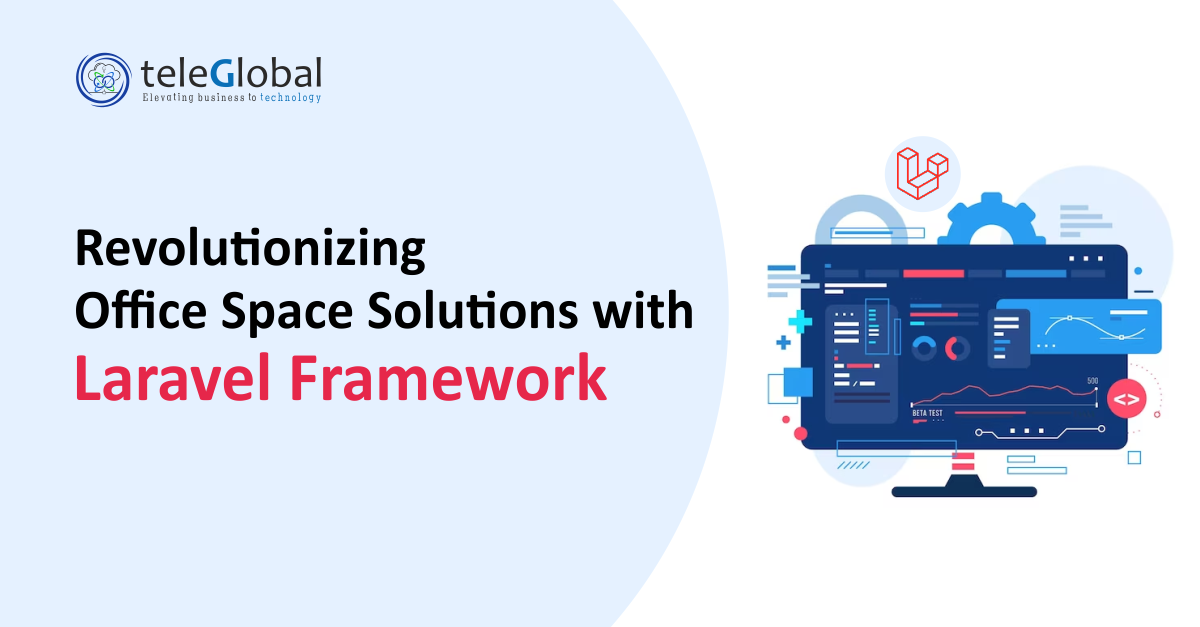
Revolutionizing Office Space Solutions with Laravel Framework
Introduction:
A leading real estate tech platform revolutionizing the office space industry. With a focus on innovation, they utilize cutting-edge technology to provide a user-friendly experience for finding, comparing, and booking diverse office spaces, including co-working spaces, traditional offices, private offices, and more. This case study explores Brantford India’s website development using the Laravel Framework and the strategies employed to reshape the office space solutions landscape.
An Overview:
The website is aimed to create a user-friendly and efficient platform that simplifies the process of finding, comparing, and booking office spaces. The development team leveraged the Laravel Framework to build a robust and scalable solution that aligned with Brantford India’s vision.
Problem Statement:
The challenge was to create a scalable and responsive real estate property website that could handle a growing number of property listings and users.
- Scalability: The website needed to accommodate an increasing number of property listings, users, and potentially expanding features without compromising performance.
- Responsiveness: Given the diverse devices users may use to browse properties, the website needed to be responsive, ensuring an optimal viewing experience on various screen sizes, including desktops, tablets, and smartphones.
Solution: Laravel’s modular structure and extensive documentation allowed for the efficient development of the real estate property website.
- Laravel: Leveraging Laravel’s modular structure was crucial for organizing the codebase efficiently. Real estate websites often have various features such as property search, user accounts, and admin panels, making Laravel’s modular approach beneficial for maintainability and scalability.
- Extensive Documentation: Laravel’s extensive documentation played a vital role in speeding up development. It provided clear guidelines on implementing features, handling database interactions, and ensuring security, helping developers build a robust real estate platform.
- Amazon Web Services (AWS):AWS services, including EC2 for hosting were chosen for their reliability and scalability. AWS offered a scalable and reliable cloud infrastructure, ensuring the website could handle fluctuations in traffic and data growth.
- EC2 (Elastic Compute Cloud): EC2 instances were used to host the real estate website, providing flexibility in adjusting computing resources based on demand.
- MySQL Database: MySQL, a popular open-source relational database management system, was selected to manage the property database. Its reliability, performance, and ability to handle complex queries made it suitable for storing and retrieving data related to property listings, user accounts, and other relevant information.
Result: The real estate property website achieved a responsive and user-friendly design, providing a seamless property search and exploration experience for users.
- Responsive Design: The website’s responsive design allowed users to easily search for and view property listings on various devices, enhancing the overall user experience.
- User-Friendly Design: The user interface prioritized ease of navigation, intuitive property search functionalities, and clear presentation of property details. This contributed to a positive user experience, crucial for a real estate platform.
- Seamless Property Exploration: Combining Laravel’s efficiency, AWS’s reliability, and a user-friendly design resulted in a real estate property website that facilitated a smooth and enjoyable property exploration process for users, addressing the initial challenges associated with a growing number of property listings and users.
Synopsis:
- User-Friendly Interface:
Conducted user experience (UX) studies to understand user behaviour. Created wireframes and prototypes for iterative design. Implemented responsive design principles for a seamless experience across devices.
- Scalability:
Performed load testing to identify potential bottlenecks. Utilized Laravel’s caching mechanisms and optimized database queries. Implemented a scalable architecture to accommodate future growth.
- Diverse Office Solutions:
Conducted in-depth market research to understand user preferences for each office type. Employed Laravel’s dynamic routing to create tailored user journeys for different office categories. Implemented responsive design principles to optimize the user interface for various devices.
Tools Used:
- Laravel Framework: Laravel is an open-source PHP web application framework designed to make web development more enjoyable and efficient. It follows the Model-View-Controller (MVC) architectural pattern, which helps in organizing code and separating concerns. Laravel provides a clean and expressive syntax, making it easy for developers to write elegant and maintainable code.
Key Features and Benefits:
- Modular Structure: Laravel’s modular structure allows developers to organize code into manageable components, promoting code reusability and maintainability.
- Eloquent ORM: Laravel’s ORM (Object-Relational Mapping) called Eloquent simplifies database interactions by providing an expressive syntax for defining and querying database models.
- Blade Templating Engine: Blade is a lightweight yet powerful templating engine that allows developers to write views in a concise and expressive manner.
- Artisan Console: Laravel includes a powerful command-line tool called Artisan, which helps automate various tasks such as migrations, testing, and code generation.
- MySQL database: MySQL is a popular open-source relational database management system (RDBMS).It is known for its reliability, performance, and scalability, making it a widely used choice for web applications.
Key Features and Benefits:
- Relational Database: MySQL follows a relational database model, allowing the structuring of data into tables with relationships, ensuring data integrity and consistency.
- ACID Compliance: MySQL adheres to ACID (Atomicity, Consistency, Isolation, Durability) properties, ensuring reliable and transactional data operations.
- SQL Support: MySQL uses SQL (Structured Query Language) for defining and manipulating data, making it compatible with a wide range of applications and tools.
- Amazon Web Services (EC2) :is a comprehensive and widely used cloud computing platform.Elastic Compute Cloud (EC2) is a core AWS service providing scalable compute capacity in the cloud.
Key Features and Benefits:
- Scalability: EC2 allows for the easy scaling of computing resources, enabling the website to handle varying levels of traffic and workloads.
- Flexibility: Users can choose different types of EC2 instances based on their specific computing requirements, optimizing performance and cost.
- Reliability: AWS provides a reliable infrastructure with data centre’s in multiple regions, ensuring high availability and fault tolerance.
- Security: AWS offers various security features, including virtual private clouds (VPCs), security groups, and key management, enhancing the overall security posture of the hosted application.
Impact:
The website’s impact was significant, providing a stable and secure platform for user friendly experience. The use of Laravel and AWS ensured high performance even during peak traffic.
Result:
The final website boasted a clean and intuitive user interface, robust backend functionalities, and efficient database management. Performance testing demonstrated the website’s ability to handle concurrent user sessions and maintain fast response times.
Achievement:
The successful completion of the project showcased the development team’s expertise in Laravel, MySQL, and AWS. The website met all the requirements and exceeded expectations in terms of performance and user experience.
Future Scope:
Future enhancements may include the integration of additional features such as personalized user accounts, recommendation algorithms, and advanced analytics. Additionally, optimizing the website for mobile devices and exploring server-less architecture on AWS are potential areas for improvement.
Conclusion:
In conclusion, the use of Laravel, MySQL, and AWS proved to be a winning combination for the development of a scalable and efficient website. The successful implementation of the project highlights the effectiveness of these technologies in creating robust web applications.








































